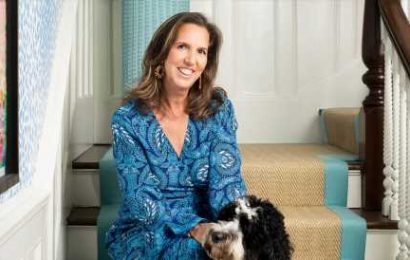Destination XL was caught a bit offguard by the rebound in business in the first quarter.
In an earnings call Thursday morning, Harvey Kanter, president and chief executive officer of the men’s big and tall retailer, said the company had been expecting “some degree of pent-up demand for clothing in the first quarter’s results, but not so soon and certainly not so dramatically.” But as vaccination rates rose, government stimulus checks hit bank accounts and men started venturing out again, DXL stores reaped the benefits.
“Our greatest challenge in 2020 was store traffic,” Kanter said. “For part of the year, our stores were closed and once they reopened, demand for new clothing accelerated initially from a very sluggish position. We started to see that sentiment shift after vaccines were being administered and pandemic restrictions were starting to scale back in different parts of the country. Suddenly many of our customers were venturing out of the house again. He is socializing. He’s resuming activities. He enjoyed pre-pandemic and that creates the need to shop for new clothes.”
Sales at the company continue to be driven by casual sportswear, activewear and loungewear, Kanter said, from Polo, Nautica and Reebok. But tailored clothing is also finding fans, he said, as weddings and other events are rescheduled.

Related Gallery
Stores Reopen for Shoppers in LA and NYC
“While this demand for tailored clothing is not game changing, it is meaningful and for certain better than we expected,” he said.
In the period, the Canton, Mass.-based company posted net income of $8.7 million against a loss of $41.7 million in the first quarter of fiscal 2020 and a loss of $3.1 million in the first quarter of fiscal 2019. Adjusted EBITDA in the first quarter was $13.7 million against a loss of $18.9 million in the same period of fiscal 2020 and $4.8 million in the same period in 2019.
Total sales for the quarter were $111.5 million, up 94.8 percent from the $57.2 million posted in the first quarter of 2020 and down 1.3 percent from $113 million posted in the first quarter of fiscal 2019. Compared to 2019, comparable-store sales increased 3.7 percent.
Looking ahead to the remainder of this year and into 2022, Kanter said the company will continue to offer “fewer and more targeted” promotions, a strategy that has successfully reduced markdowns and improved gross margin rates.
Like many other retailers, e-commerce has been a bright spot for the company with sales growing 55.8 percent in the first quarter compared to 2019. And many of those shoppers — 35.7 percent — were actually new to DXL. “Our approach has shifted from wanting to drive customers to the stores or to the web to driving customers to DXL and being there for them based on how they choose to engage and experience DXL whether in our stores, on our app or on our website,” he said.
Turning to wholesale, Kanter said that business, driven by Amazon, generated sales of $3.1 million in the first quarter of this year, up from $2.4 million in the first quarter of 2019.
The company also revised its projections for fiscal 2021 and is now expecting sales of approximately $415 million to $435 million, adjusted EBITDA of approximately $20 million to $30 million and positive free cash flow with comparable-store sales close to slightly negative to 2019 levels.
“Our revised forecast remains cautiously optimistic as sales could be negatively impacted by the spread of COVID-19 variants, prolonged restrictions and potential store closures, but we are excited to see our existing customers return and new customers experience DXL for the first time,” Kanter said.
Source: Read Full Article







